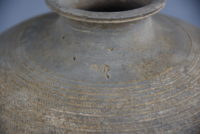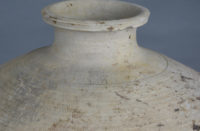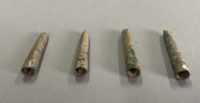 The archaeological survey at the site of a shantytown renewal project in Sanmenxia, Henan Province, has unearthed far more than a bronze swan full of unknown liquid. Over three excavations since digging began in October of 2017, archaeologists have excavated more than nine acres of ground along the bank of the Yellow River and uncovered 602 ancient tombs.
The archaeological survey at the site of a shantytown renewal project in Sanmenxia, Henan Province, has unearthed far more than a bronze swan full of unknown liquid. Over three excavations since digging began in October of 2017, archaeologists have excavated more than nine acres of ground along the bank of the Yellow River and uncovered 602 ancient tombs.
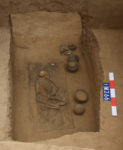 The tombs are laid out in an orderly row next to ancient Shanzhou city, today part of Sanmenxia. A plurality of the tombs, almost half of them, date to the period between the Warring States (475-221 B.C.) and the Han Dynasty (221-206 B.C.). The rest date to the Tang (618-907 A.D.), Song (960-1276), Ming (1368-1644) and Qing (1644-1911) Dynasties, an impressive chronological spread that attests to the significance of Sanmexia over two thousand years.
The tombs are laid out in an orderly row next to ancient Shanzhou city, today part of Sanmenxia. A plurality of the tombs, almost half of them, date to the period between the Warring States (475-221 B.C.) and the Han Dynasty (221-206 B.C.). The rest date to the Tang (618-907 A.D.), Song (960-1276), Ming (1368-1644) and Qing (1644-1911) Dynasties, an impressive chronological spread that attests to the significance of Sanmexia over two thousand years.
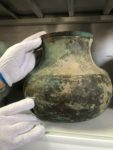 More than 2,030 funerary objects have been discovered in the tombs. Bronze ware pots, including the thirsty swan, seals, glazed ceramics, bronze writing brush caps, gold, silver and jade ornaments.
More than 2,030 funerary objects have been discovered in the tombs. Bronze ware pots, including the thirsty swan, seals, glazed ceramics, bronze writing brush caps, gold, silver and jade ornaments.
Located between Xi’an and Luoyang, two ancient capitals in Chinese history, Sanmenxia used to serve as a military and traffic passage. Experts believe the discovery can provide valuable information for tomb evolution in the Sanmenxia area and shed light on its decline with the shift in the political power center.
